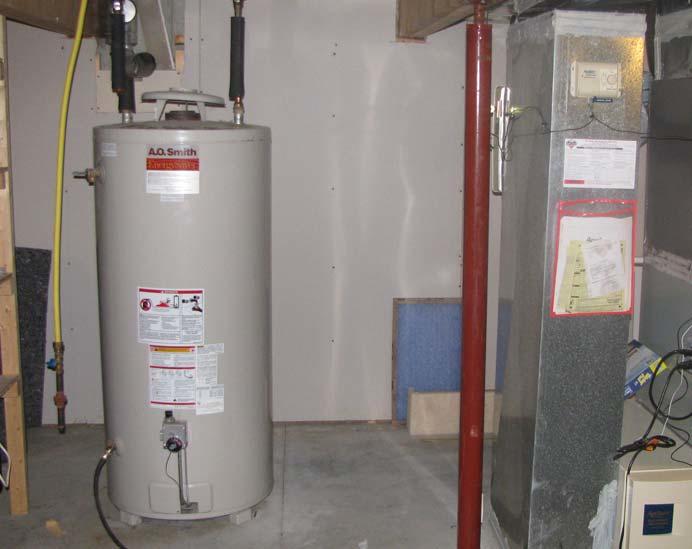Steps on How to Care for Your Home's Hot Water System Effectively
Steps on How to Care for Your Home's Hot Water System Effectively
Blog Article
Listed here down the page you will find more reliable material related to How to Maintain a Hot Water Heater in a Few Simple Steps.

Hot water is crucial for day-to-day convenience, whether it's for a refreshing shower or cleaning dishes. To ensure your warm water system runs successfully and lasts longer, routine maintenance is essential. This post supplies functional pointers and understandings on just how to preserve your home's warm water system to stay clear of disruptions and expensive repair work.
Introduction
Keeping your home's hot water system could seem challenging, however with a few easy steps, you can guarantee it runs smoothly for several years to come. This guide covers whatever from recognizing your hot water system to DIY upkeep ideas and understanding when to call in professional help.
Relevance of Maintaining Your Warm Water System
Normal maintenance not just prolongs the lifespan of your hot water system however likewise guarantees it runs efficiently. Ignoring maintenance can bring about decreased effectiveness, greater energy costs, and even premature failure of the system.
Indicators Your Hot Water System Needs Maintenance
Recognizing when your warm water system requires interest can stop significant issues. Look out for indicators such as irregular water temperature, odd sounds from the heater, or rusty water.
Flushing the Hot Water Heater
Flushing your water heater gets rid of debris buildup, improving efficiency and prolonging its life.
Checking and Replacing Anode Rods
Anode poles prevent corrosion inside the tank. Inspecting and replacing them when worn is important.
Facility Concerns Needing Expert Help
Instances include major leakages, electric troubles, or if your water heater is regularly underperforming.
Regular Specialist Maintenance Conveniences
Professional maintenance can consist of comprehensive evaluations, tune-ups, and guaranteeing compliance with safety requirements.
Checking and Adjusting Temperature Settings
Adjusting the temperature setups makes certain optimum efficiency and safety and security.
DIY Tips for Maintenance
You can carry out a number of upkeep tasks on your own to keep your warm water system in top condition.
Checking for Leakages
Consistently inspect pipelines and connections for leakages, as these can bring about water damage and greater costs.
Understanding Your Warm Water System
Before diving right into upkeep tasks, it's valuable to comprehend the fundamental elements of your hot water system. Generally, this consists of the hot water heater itself, pipelines, anode rods, and temperature level controls.
Monthly Upkeep Tasks
Normal regular monthly checks can help capture minor problems before they rise.
Examining Stress Alleviation Valves
Evaluating the stress safety valve ensures it works appropriately and prevents too much pressure accumulation.
Shielding Pipes
Shielding hot water pipelines lowers warm loss and can save energy.
When to Call a Professional
While DIY maintenance is useful, some concerns need expert know-how.
Final thought
Normal maintenance of your home's hot water system is important for effectiveness, longevity, and cost savings. By following these pointers and recognizing when to seek professional help, you can ensure a dependable supply of hot water without unexpected disturbances.
How to Maintain an Instant Hot Water Heater
Before tinkering with your hot water heater, make sure that it’s not powered on. You also have to turn off the main circuit breaker and shut off the main gas line to prevent accidents. Also turn off the water valves connected to your unit to prevent water from flowing into and out of the appliance. 2. When you’re done, you have to detach the purge valves’ caps. These look like the letter “T†and are situated on either side of the water valves. Doing so will release any pressure that has accumulated inside the valves while at the same time avoid hot water from shooting out and burning your skin. 3. When the purge valves’ caps are removed, you have to connect your hosing lines to the valves. Your unit should have come with three hoses but if it didn’t, you can purchase these things from any hardware or home repair shops. You can also get them from retail stores that sell water heating systems. Read the user’s manual and follow it to complete this task properly. When the hosing lines are connected, open the purge port’s valves. 4. You should never use harsh chemical cleaners or solutions when cleaning your unit. Make use of white vinegar instead. It should be undiluted and you’ll probably use about 2 gallons. 5. Now flush your water heater. This task should probably take about 40 minutes. We can’t give you specific directions for this because the procedure is carried out depending on the type, model and brand of your heater. With that being said, refer to the user’s manual. 6. When you’re done draining the unit, you have to turn off the purge port valves again. Remove the hosing lines that you earlier installed on each of the water valves. Put the valve caps (purge port) back in their respective places and be very careful so as not to damage the rubber discs that are found inside these caps. 7. Now that everything’s back in place, check your user’s manual again to find out how to reactivate your water heating system. 8. Once it is working, turn one of your hot water faucets on just to let air pass through the heater’s water supply pipes. Leave the tap on until water flows smoothly out of it. https://www.orrplumbing.com/blog/2014/september/how-to-maintain-an-instant-hot-water-heater/

I ran across that blog posting about Water Heater Maintenance Tips You Can't Afford to Forget while doing a lookup on the web. Sharing is nice. Helping people is fun. Thanks for going through it.
Book Today! Report this page